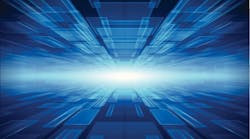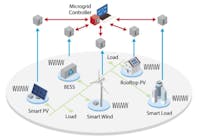Being T&D World’s technical writer is never boring. It can be a bit challenging, even a little overwhelming at times, but it is never boring. As with past adventures, this one began when my phone rang. It was my good friend and editor Rick Bush. He called to talk about my latest assignment: the future of the power grid.
My initial thoughts were that I needed to polish the old crystal ball, followed by get out the Ouija board and, finally, find some tarot cards. With a cup of coffee in one hand and a notepad in the other (hands-free phones come in handy), we got down to business. As we talked, I realized Rick and I have been writing about the future of the grid for many years already.
All of my assignments in recent times have been devoted to emerging technologies and their impact on the grid. One assignment explored the maturation of microgrid technology, and another investigated advanced asset management systems’ capacity to redefine maintenance and operations programs.
I also wrote a series of articles on the digitalization of the grid, which is shifting electric utilities to a totally new way of doing business. This is probably one of the biggest transitional forces not only for the grid but our entire society. It has been identified as a major mega trend sweeping the world.
A few months ago, improved energy storage was the subject of my writing. It also included distributed energy resources technology. These two technologies were doing some amazing reshaping right under our noses.
As I thought about all this material, I realized — with all the technologies being implemented today — the industry has been planting the seeds of the future grid for many years and they are now bearing fruit. Taken one at a time, the technologies may look interesting but appear to be addressing only a small portion of the grid. Taken together, however, they are moving from niche technologies into the mainstream of the power grid, and the results are transformational.
Road Trip
I had the subject defined for my latest assignment — at least the basics — but I needed to hit the road and talk with experts, friends and colleagues. As luck would have it, the IEEE Power & Energy Society (PES) Transmission and Distribution Conference & Exposition was taking place in Denver, Colorado, U.S., a few hundred miles from my home, and I was registered to attend. The expo theme, Power Forward, even fit my assignment.
The biggest utility event in 2018 would feature the hottest trends for the future grid, and I would get an opportunity to kick the technological tires and look under the hood of the cutting-edge technologies being developed. With more than 900 exhibitors, super sessions and numerous technical presentations over the span of four days, the expo would be the perfect place for research, but it would be the informal meetings spent talking with PES friends that would give me even better insights on the future.
Listen and Learn
One of the best features of conferences and meetings like this one has always been the off-the-record discussions that take place around the breakfast table or during coffee breaks. There was no lack of response when I asked, “What will the grid look like in 10 years?” That one question woke up the breakfast club. It was like a jolt of caffeine hit everyone at once — what fun that was!
More renewable energy was the most frequent answer. The collective group saw a grid with a lot more wind and solar than we have today, but there was no agreement on what the total mix would be, except coal would be a minor player. They also were quick to point out grid-scale energy storage would play an increasingly important part in the next-generation grid, but again, the type of storage covered all the available technologies with no clear leader.
Someone started talking about a hybrid grid where the existing alternating-current transmission system would be integrated with a direct-current over-grid, which many are calling a mega grid. That got my attention. It turns out, several groups are working on defining the mega grid, which many believe will hold a great deal of promise for the future of the electric power grid.
As I talked to people at the expo, it became apparent the mega grid needed more attention. I learned the issues associated with it can be grouped in three main categories: defining the mega grid, investigating the technology associated with this future grid, and managing and controlling this hybrid animal.
Interestingly, most of the technology we need is available, and it is getting better every day. Unfortunately, we do not have a consensus on building out this mega grid or how to manage it. Fortunately, a great deal of groundwork is being done, but there is a lot more to do.
Talking with all my friends, colleagues and acquaintances at the expo gave me the impression we have a good handle on where the grid is going. The building blocks are in place in many parts of the world, which is giving us a lot of basic operating experience. However, we need to start deliberately linking them together and build this hybrid rather than just letting it happen haphazardly one piece at a time.


